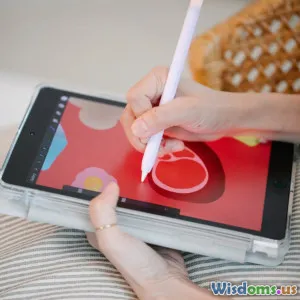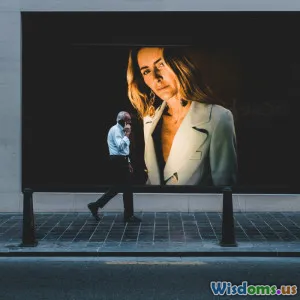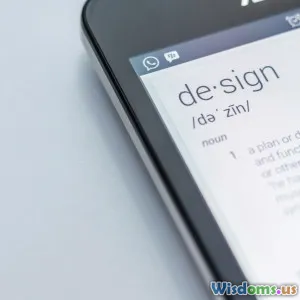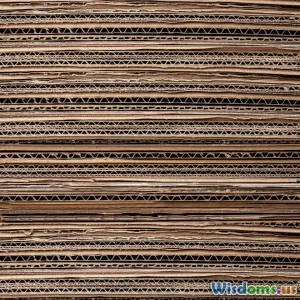
Graphic Design Techniques to Enhance Creativity
8 min read Discover graphic design techniques that fuel creativity and boost your creative projects. (0 Reviews)
Graphic Design Techniques to Enhance Creativity
Graphic design is not only about visuals; it’s an essential method of communication that influences public perception and engagement. The realms of creativity and design are intertwined, governing how we create and interpret messages through various mediums. To enhance this creativity, graphic designers can utilize a range of techniques and approaches that stimulate fresh ideas and innovative designs.
1. Embrace Exploratory Sketching
Exploratory sketching is a powerful tool that allows designers to visualize ideas before committing them to digital platforms. The process fosters a looser, more spontaneous way of thinking, breaking down mental barriers often encountered in conceptual stages.
Example:
For instance, a designer tasked with creating a new logo for an eco-friendly brand might spend an afternoon sketching various concepts. These sketches could range from simplistic leaf designs to abstract representations of sustainability. The key here is in the exploration—each sketch can spark an unexpected idea or a variation that would not have been discovered without this initial free-form expression.
Tip:
Keep a sketchbook handy or use digital drawing apps like Procreate to capture spontaneous ideas anytime they arise.
2. Delve into Color Psychology
Color can have profound effects on emotions and behaviors. Understanding color psychology is crucial for effective design communication. Designers can evoke specific feelings in their audience simply through their color choice.
Example:
Consider a company looking to promote products for children; bright and vibrant colors like yellow and orange can invoke feelings of joy and creativity. In contrast, blue and green tones might be utilized for wellness brands, representing calmness and reliability.
Data Insight:
According to a study by Colorcom, about 85% of consumers make purchasing decisions based on color alone, highlighting the importance of color in graphic design. Harnessing this knowledge can enhance creativity in designing promotional materials that resonate with target audiences.
3. Experiment with Typography
Typography is more than just selecting a font; it plays a significant role in brand identity and the overall impact of a design. Experimenting with different typographic layouts can lead to unique expressions of creativity.
Example:
In a recent campaign, a designer may juxtapose a bold sans-serif font against a clean serif font in an invitation redesign, pairing elegance with modernity. This type contrast can create a visual hierarchy that draws the reader's eye and enhances emotional connection to the work.
Quote:
As renowned typographer Eric Spiekermann aptly puts it, "Type is all around you; everywhere you look, it is there to communicate, inspire, and inform."
4. Leverage Design Constraints
While it may seem counterintuitive, embracing constraints can produce creativity. When designers work with limitations (such as a specific color palette, size, or format), they are often forced to think outside the box for alternatives.
Example:
A newspaper illustration must usually fit within a defined column layout. Embracing these constraints can lead graphic designers to explore designs within the given limitations while discovering innovative shapes or concepts that transcend expectations.
5. Research and Gain Inspiration
Maintaining an awareness of current trends in graphic design can also foster creativity. Subscribing to design blogs, following influencers on social media, or utilizing platforms like Behance or Dribbble can help designers stay fresh.
Insight:
For example, utilizing Pinterest to create inspiration boards allows designers to visualize concepts using diverse elements, leading to unexpected combinations that can spark creativity.
Tip:
Dedicate a section of your workspace or digital folder to inspiration, ensuring it’s a space you can return to when creativity wanes.
6. Utilize Diverse Digital Tools
The evolution of technology has revolutionized graphic design. Harnessing diverse digital tools can bring about new ways of thinking and creating. From Adobe Creative Suite to free applications like Canva, being adaptable with software broadens creative possibilities.
Example:
A designer may typically rely on Illustrator for creating vector images. However, experimenting with a tool like Figma for layouts and prototyping can facilitate a unique perspective and inventive means of solving design problems.
Data Insight:
According to a report from 99designs, 76% of graphic designers use Adobe Photoshop, but only 32% leverage newer software for collaborative design. This highlights the need for exploration in the digital realm.
7. Collaborate with Other Creatives
Collaboration can be incredibly enriching for creative growth. Pairing up with other designers, artists, or professionals from different disciplines introduces new ideas, perspectives, and techniques.
Example:
For instance, a graphic designer and a copywriter could collaborate on an advertising campaign, where each professional plays off the strengths of the other—designers creating visuals that encapsulate the copy's voice and copywriters shaping narratives around design.
Insight:
In a joint workshop levered by AIGA, numerous designers expressed how collaboration with professionals from various fields reignited their passion for design and brought forth groundbreaking concepts.
Conclusion
Graphic design is a vibrant field where innovation and creativity meet. By actively engaging in practices like exploratory sketching, understanding color psychology, and remaining open to collaboration, designers can cultivate a rich atmosphere where creativity thrives. In an industry that is continually evolving, adopting these techniques will not only enhance your individual projects but also elevate the entire field of graphic design. Now is the time to implement these strategies and witness your creativity soar!
Rate the Post
User Reviews
Popular Posts





















